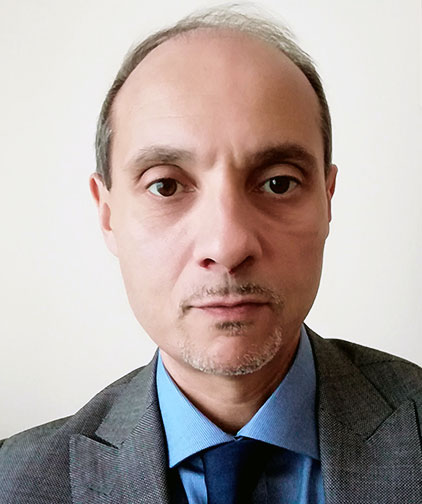With investors honing in on the potential for greater operational efficiency, external fund hosting services are becoming increasingly popular, with a diverse range of banks, asset managers and platform providers getting in on the act.
 Angelo Mauri
Angelo Mauri Head of Finance, ENPAP
ENPAP, the Italian first pillar pension scheme for Psychologists (Ente Nazionale di Previdenza ed Assistenza per gli Psicologi), has been among the early innovators in this space. They spotted the potential benefits of structuring the bulk of the pension scheme’s assets in a Special Investment Fund as early as 2015 and executed the change within half a year. In doing so, they were taking advantage of regulations that had initially been designed with asset management product structures in mind – structures which individual pension funds and others subsequently discovered they could also leverage for their own portfolios.
Sitting down with Investor Spotlight, Angelo Mauri discussed the reasons why a dedicated external fund hosting structure – in their case a SICAV – made sense for their diverse, international multi-asset portfolio. These approaches can significantly enhance the investor’s asset control, improve governance and reduce operational costs. Yet specificity is key, as bfinance’s Ruben Mutsaers explores in a postscript beneath: there are a variety of models available, and the potential benefits differ greatly depending on the investor’s regulatory framework, asset classes used, size, reporting requirements and other factors.
Related reading from Investor Spotlight: Insurer Pioneers New Model for Investment Delegation
What were the key reasons for you to adopt the new structure?
There were two compelling reasons to move towards this SICAV structure. The first was administrative cost. For example, if you have different mandates in place then each portfolio manager is buying and selling different assets, each purchase and sale has a direct impact on the balance sheet and each movement has to be recorded in the accounting book (thousands of movements each year). In a SICAV you can net out those activities because all the movements (sales, purchases, etc.) are inside the SICAV and we only have to record the movements related to the SICAV shares purchased or sold.
The second reason was tax. If you have several different mandates with different funds and are incurring profits in some and losses in others, then under the Italian tax code we can’t offset the profits against the losses. If those mandates are in one vehicle, like a sub-fund in a SICAV, then we pay taxes only on the net outcome – and even that only happens when we take a dividend (so not on profits that haven’t yet been paid out).
The third advantage is that it simplifies manager selection. While Italian pension funds are subject to European laws on public procurement procedures, which make selecting portfolio managers a long and bureaucratic process, a Luxembourg SICAV does not have to follow that procedure. Our manager selection is technically being conducted through the SICAV provider, even though we are fully involved, eliminating the need to go through public procurement.
Q: Do you have your own dedicated ManCo or a sub-fund within an existing ManCo? Tell us a bit more about the structure.
SICAV
A SICAV (société d’investissement à capital variable) is a type of SIF (Specialised Investment Fund) – a lightly regulated type of investment fund in Luxembourg, which may be sold to “well-informed investors.” A SICAV may contain multiple sub-funds, each with a different investment policy.
This is a typical umbrella SICAV with several sub-funds, and we are one of the sub-funds. Within that one sub-fund we have nine mandates; having multiple sub-funds was also possible but would have been more expensive. It was important for us that we created our own sub-fund, rather than using one that already existed, so that we could have it customised fully to our needs. We want to choose our own portfolio managers, set our own investment guidelines and change them over time. In the last few months, for example, we customised our guidelines to implement ESG factors inside the investment guidelines.
This is not always the case with the other Italian casse [casse di previdenza – first pillar pension schemes for various professions]. We see other casse that have used a SICAV structure but with, I think, less control.
Q: How did you select the provider for the SICAV?
We contacted five different banks and financial institutions that we knew may be able to offer it and reviewed their proposals. One key difference between the providers was cost. Another was the amount of vertical integration that they could offer: the one we selected offered a very integrated operation with all of the relevant services; a ‘one stop shop’ with custody, fund administration, banking services and so on. Importantly, we have not used the firm’s asset management services – this helps to avoid conflicts of interest.
On that point, a third difference between the providers was the amount of flexibility we would have in terms of the asset managers we might want to use: one of the providers we approached was proposing an Italian investment platform which had already on-boarded several managers and would have required us to choose from those managers. We didn’t want to be constrained like that.
Q: Have you found that all asset managers you’d want to invest with are happy to work with this type of structure, or have there been any issues?
Generally this has all been straightforward. There have been a few issues with technical aspects – for example, we do all of the currency hedging at the SICAV level (the provider wanted to do all of the hedging themselves) but some managers use a different platform for hedging and wanted to suggest that.
One area that is more difficult is private markets. In the last few years we have invested in private debt and private equity funds, which cannot be included in the sub-fund we have now. At the moment, due to the relatively small amount invested in private markets (<€60 million), we think that now is not the moment to consider creating a new sub-fund for this. Making a sub-fund under the SICAV just to include several Alternative Investment Funds would be more expensive, due to the duplication of fees at fund and SICAV level.
Q: Do you see a momentum in Italy now, with pension funds moving towards platform solutions? What is driving that, do you think?
Yes, there does seem to be more appetite now in Italy for this type of approach. The tax advantages, the savings on trading costs, the efficiency in terms of the fees that we pay, the simpler procurement procedures for manager selection – these are all very attractive. In terms of overall efficiency, the current cost for all administrative costs relating to the sub-funds is very competitive relative to the standard approach of investing in different external funds.
Our expert says:
 Ruben Mutsaers
Ruben Mutsaers
Risk Solutions Manager
ENPAP’s case study is a great example of the benefits that investor-tailored vehicle structures can bring. Dedicated and customised structures have the potential to significantly enhance an investor’s asset control, governance and competitiveness through lower operational costs. Their potential importance was highlighted by the events of 2008, which underlined the importance of asset control and protection. In times of market stress, greater transparency and less liquidity risk (e.g. resulting from redemptions by co-investors in a fund) are highly desirable features.
This is a complex space. We see a wide range of implementation solutions from different types of providers (banks, asset managers, platform providers) with different business models. Each has its unique pros and cons. The heterogeneity of the offerings makes it helpful to contrast proposals from different provider-types and providers to find the optimal approach, introduce competition and create an audit trail for the (ultimate) stakeholders such as pension beneficiaries.
While the above benefits generally hold true for most institutional investors irrespective of size, industry or jurisdiction, the appropriate implementation to achieve these benefits can differ greatly per investor depending on a long list of factors – legal framework, the asset classes being used, reporting requirements, domicile and many more.
ENPAP’s case study, for example, has a focus on Italian tax considerations and on in-house cost savings. Other investors might want to place more emphasis on aspects such as asset control, structure customisation, liability segregation between managers (a sub-fund with sleeves or multi-manager structure imposes cross contamination risk between the managers). An alternative structure would, for example, be a client-dedicated platform with individual sub-funds that each appoints an external asset manager. Segregated mandates would offer higher asset control, but, as highlighted well in this interview, might not be the most tax-efficient solution for an Italian investor.
Important Notices
This commentary is for institutional investors classified as Professional Clients as per FCA handbook rules COBS 3.5R. It does not constitute investment research, a financial promotion or a recommendation of any instrument, strategy or provider. The accuracy of information obtained from third parties has not been independently verified. Opinions not guarantees: the findings and opinions expressed herein are the intellectual property of bfinance and are subject to change; they are not intended to convey any guarantees as to the future performance of the investment products, asset classes, or capital markets discussed. The value of investments can go down as well as up.


 English (Global)
English (Global)  Français (France)
Français (France)  Deutsch (DACH)
Deutsch (DACH)  Italiano (Italia)
Italiano (Italia)  Dutch (Nederlands)
Dutch (Nederlands)  English (United States)
English (United States)  French (Canada)
French (Canada) 

